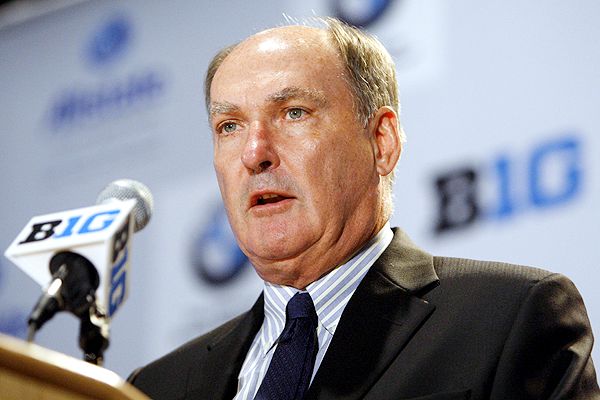Posted by KoryCarpenter on January 17th, 2013
Call Big Ten commissioner Jim Delany a greedy businessman for caring more about the bottom line than tradition. Call him a savant for getting in front of the conference realignment fiasco by adding Nebraska before anyone had a chance to blink. However you feel, you can’t deny that the man knows how to run a conference. Forbes recently ranked the most valuable athletic conferences and the Big Ten came in at No. 1, ahead of the mighty SEC. While myself and probably many others were surprised to see the B1G on top, maybe we shouldn’t have been. The conference has a better balance of football and basketball powers than any other league. There are football blue bloods like Nebraska, Michigan and Ohio State, and perennial basketball powers like Indiana, Michigan State and Ohio State. Here is how the top six power conferences fared:
- Big Ten: Total Income (bowl games + NCAA Tournament + television revenue): $310 Million
- Pac-12: $303 Million
- ACC: $293 Million
- SEC: $270 Million
- Big 12: $262 Million
- Big East: $94 Million

What Does Jim Delany’s Latest Move Mean For The Big 12? (US Presswire)
It should be noted that the SEC’s television revenue is about to get a huge boost when it receives a new TV deal soon. It will likely jump the conferences above it on the list and vault the league to No. 1 shortly afterward. But this is a Big 12 microsite, so that’s a different conversation for a different day. The Big 12’s $200 million yearly television revenue lags behind the SEC, ACC, and Big Ten, but as the article points out, it isn’t as bleak of a forecast as it may seem. With only 10 members on board, each school receives $20 million per year and is still allowed to negotiate and keep its own tier three television rights, which usually includes certain non-conference football and basketball games as well as Olympic sports. The Longhorn Network, for example, gives Texas an extra $15 million per year. Fifth out of the six major conferences isn’t the best spot to be in, but it’s a far cry from a year ago when nobody knew if the conference would even be around today. Successfully adding TCU and West Virginia after the departures of Missouri and Texas A&M were key for the conference’s survival, and while time will tell if the two schools were the best available options, the phrase ‘beggars can’t be choosers’ rings in the background. With its television deal in place and schools making great money, the conference is not in as much in danger of being preyed upon as, for example, the ACC is right now. Maryland will bolt to the Big Ten soon while Florida State and Clemson have been rumored to be interested in the Big 12. It looks like the ACC will have 14 members next season if both schools remain in tow, though, as Pittsburgh and Syracuse will join the league.
Read the rest of this entry »
| big 12, microsites
| Tagged: bob bowlsby, clemson, college valuations, florida state, forbes, jim delany, maryland, tcu, west virginia
Share this story













































